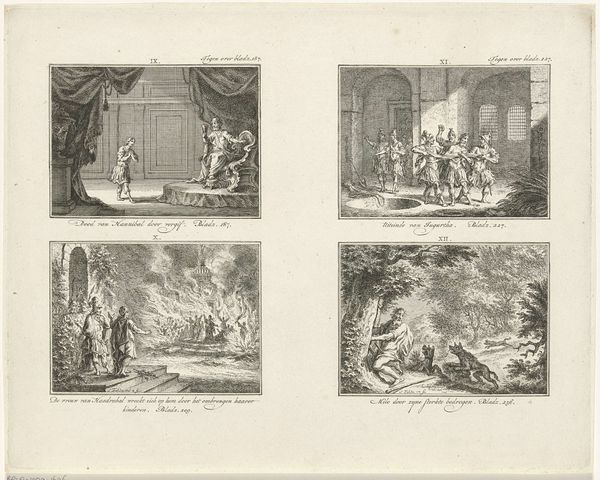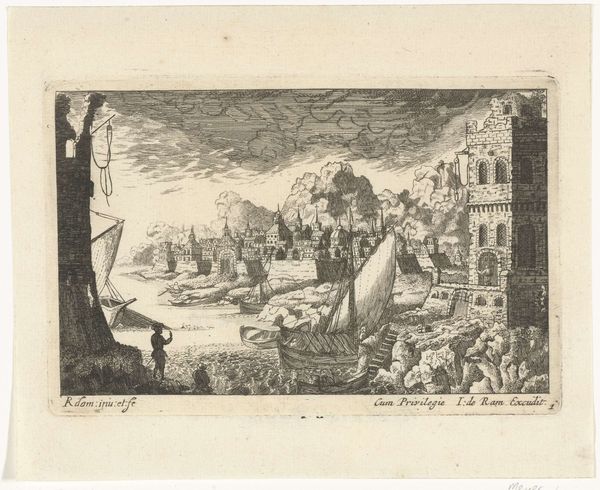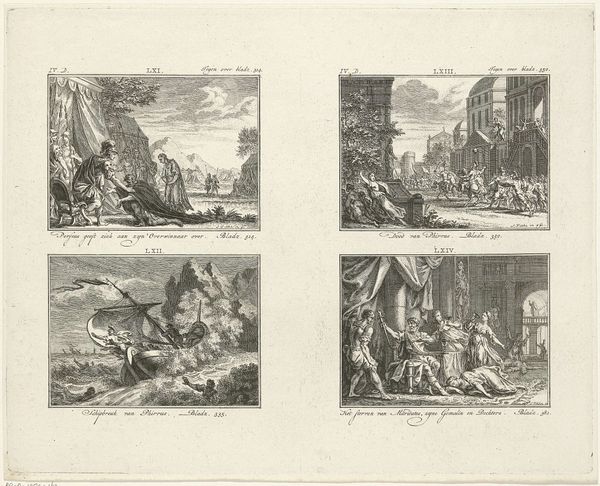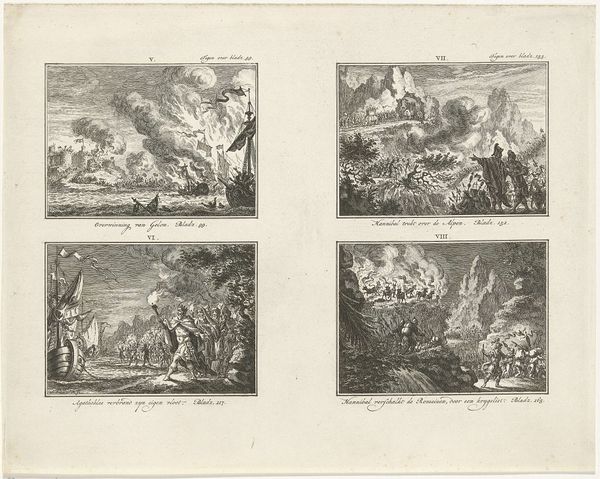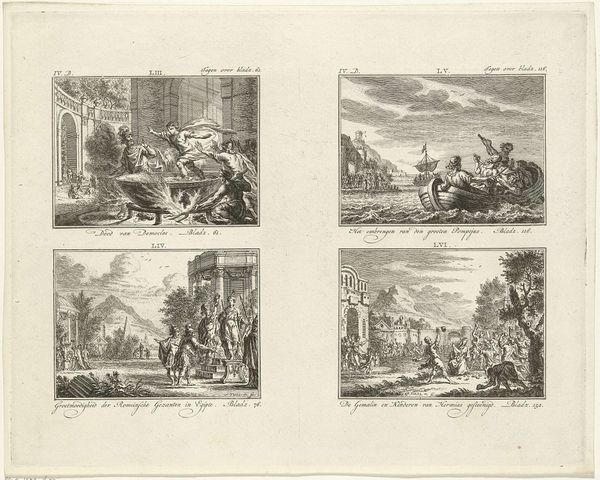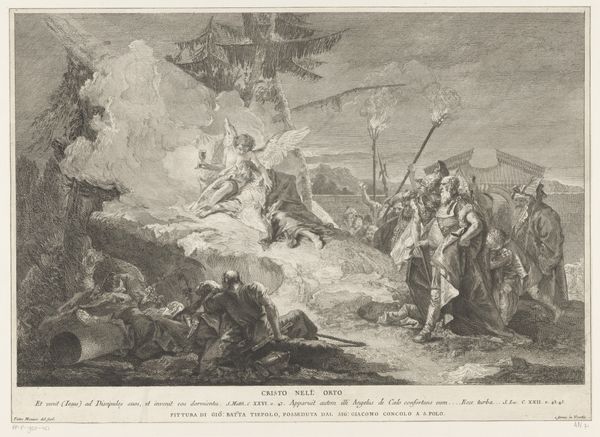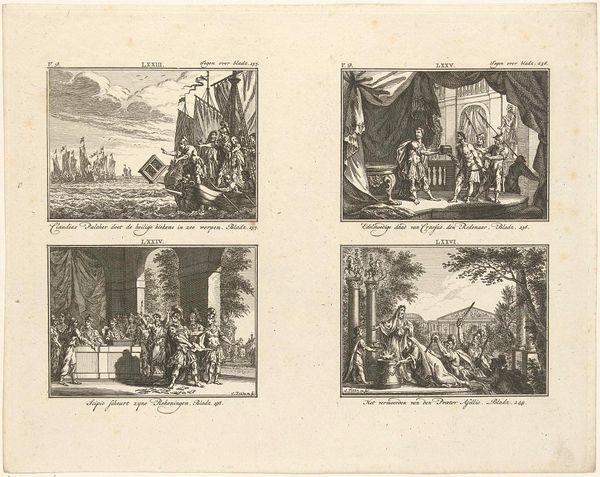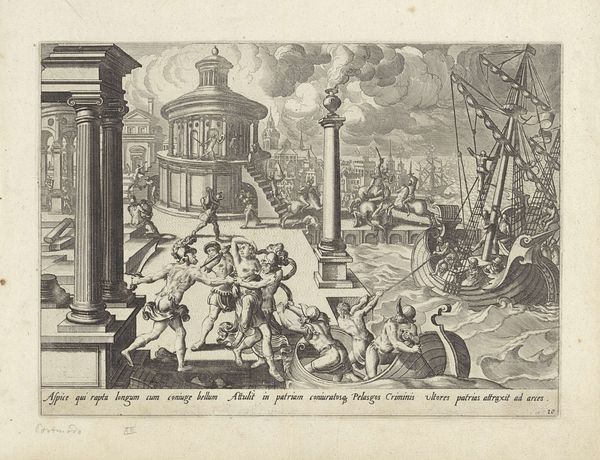
print, etching, engraving
#
narrative-art
#
baroque
# print
#
etching
#
old engraving style
#
history-painting
#
engraving
Dimensions: height 223 mm, width 284 mm
Copyright: Rijks Museum: Open Domain
These four scenes from classical history were made by Simon Fokke, using etching, sometime in the 18th century. The etching process involves covering a metal plate with a waxy, acid-resistant substance. The artist then scratches an image into the wax, exposing the metal beneath. When acid is applied, it bites into the exposed lines, creating grooves. The plate is then inked, and the surface wiped clean, leaving ink only in the etched lines. Finally, the plate is pressed onto paper, transferring the image. The quality of the final print depended on the etcher's skill in manipulating the acid and controlling the depth and fineness of the lines. The graphic quality of etching meant that it lent itself well to the task of mass producing images. The medium helped to disseminate classical stories to a wider audience. This reflects the growing democratization of knowledge and the rise of print culture during the Enlightenment, with a rising middle class. The physical act of etching, the labor-intensive process, speaks to the changing social and intellectual landscape of the 1700s.
Comments
No comments
Be the first to comment and join the conversation on the ultimate creative platform.


